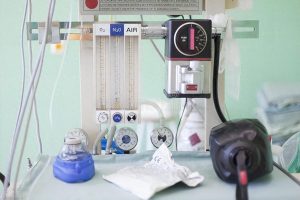With the advancement of medical technology, ventilators have emerged as life-saving devices for patients with respiratory failure. However, it's crucial to understand that these devices operate in six distinct ventilation modes. Let's delve into the differences among these modes.

Ventilator usage status
Six Mechanical Ventilation Modes of Ventilators:
-
- Intermittent Positive Pressure Ventilation (IPPV):
- Inspiratory phase is positive pressure, while the expiratory phase is zero pressure.
- Mainly used for respiratory failure patients like COPD.
- Intermittent Positive and Negative Pressure Ventilation (IPNPV):
- Inspiratory phase is positive pressure, while the expiratory phase is negative pressure.
- Caution needed due to potential alveolar collapse; commonly used in laboratory research.
- Continuous Positive Airway Pressure (CPAP):
- Maintains continuous positive pressure in the airway during spontaneous breathing.
- Applicable for treating conditions like sleep apnea.
- Intermittent Mandatory Ventilation and Synchronized Intermittent Mandatory Ventilation (IMV/SIMV):
- IMV: No synchronization, variable ventilation time per breathing cycle.
- SIMV: Synchronization available, ventilation time predetermined, allowing patient-initiated breaths.
- Mandatory Minute Ventilation (MMV):
- No mandatory ventilation during patient-initiated breaths, and variable ventilation time.
- Mandatory ventilation occurs when preset minute ventilation is not achieved.
- Pressure Support Ventilation (PSV):
- Provides additional pressure support during patient-initiated breaths.
- Commonly used in SIMV+PSV mode to reduce respiratory workload and oxygen consumption.
Differences and Application Scenarios:
-
- IPPV, IPNPV, and CPAP: Primarily used for respiratory failure and lung disease patients. Caution is advised to avoid potential side effects.
- IMV/SIMV and MMV: Suitable for patients with good spontaneous breathing, aiding in preparation before weaning, reducing respiratory workload, and oxygen consumption.
- PSV: Reduces respiratory burden during patient-initiated breaths, suitable for various respiratory failure patients.

Ventilator at work
The six ventilation modes of ventilators each serve unique purposes. When selecting a mode, it's essential to consider the patient's condition and requirements for a wise decision. These modes, like a doctor's prescription, need to be tailored to the individual to unleash their maximum effectiveness.